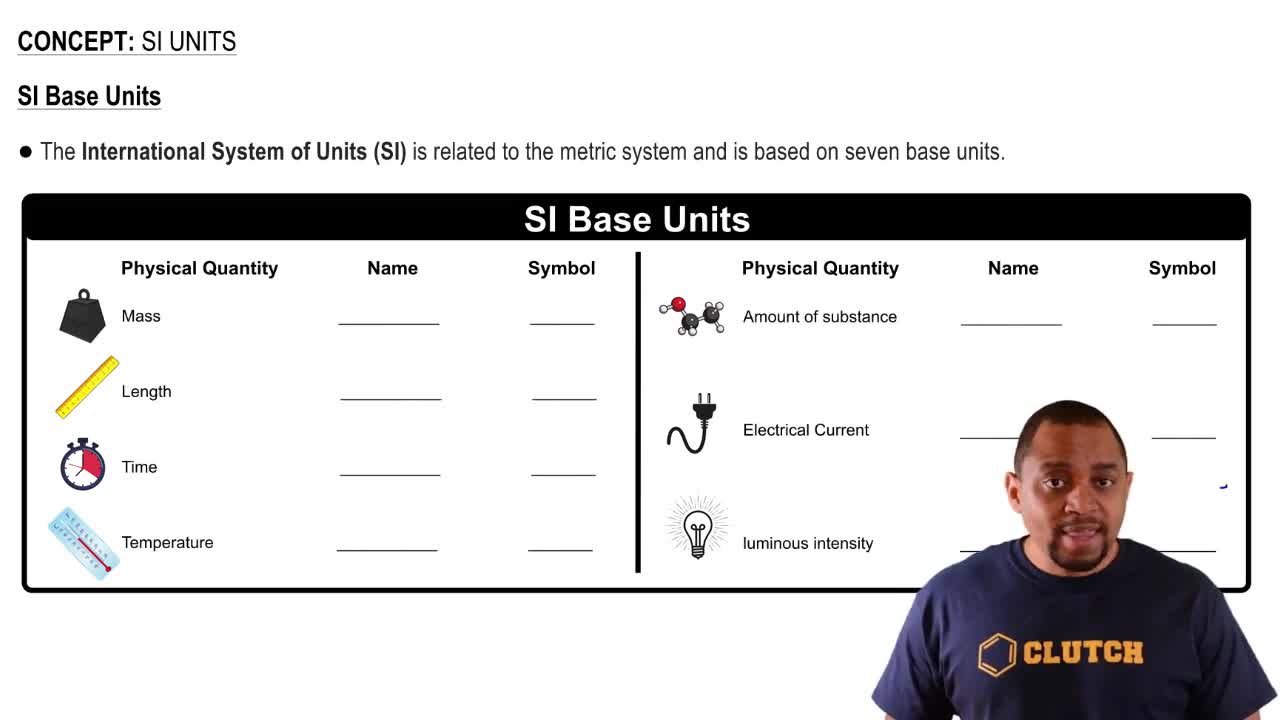Here are the essential concepts you must grasp in order to answer the question correctly.
SI Units
The International System of Units (SI) is a standardized system of measurement used globally in science and engineering. It consists of seven base units, including the meter (length), kilogram (mass), second (time), ampere (electric current), kelvin (temperature), mole (amount of substance), and candela (luminous intensity). Derived units are formed from these base units to measure other physical quantities.
Recommended video:
Density
Density is defined as the mass of an object divided by its volume, typically expressed in units such as kilograms per cubic meter (kg/m³) in the SI system. It is a derived quantity that provides insight into how much matter is packed into a given space, which can vary significantly between different substances. Understanding density is crucial for applications in material science, fluid dynamics, and various engineering fields.
Recommended video:
Derived Units
Derived units are combinations of the seven base SI units that are used to measure more complex quantities. For example, density (mass per unit volume) is a derived unit expressed as kg/m³, where kilograms (kg) is the unit of mass and cubic meters (m³) is the unit of volume. Recognizing how to express derived units in terms of fundamental units is essential for accurate scientific communication and calculations.
Recommended video:
Ideal Gas Law Derivations
 Verified step by step guidance
Verified step by step guidance


